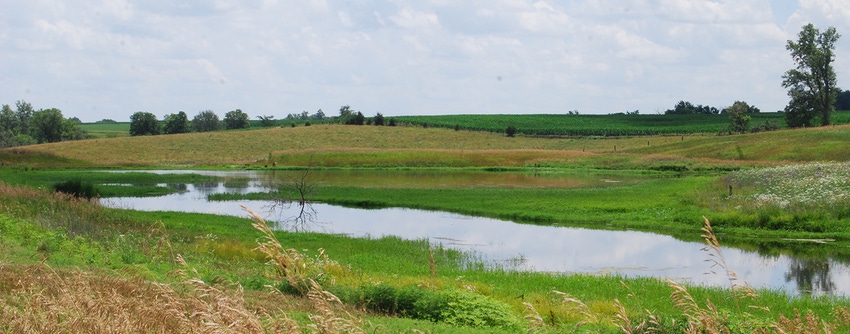
U.S. EPA has cranked up pressure on Pennsylvania to tighten down regulation of agriculture’s pollution contribution to the Chesapeake Bay. That message was crystal clear during late-January’s joint announcement by state ag and environmental officials on a model Lancaster County farm.
Terming it as a “re-boot”, Department of Environmental Protection Secretary John Quigley, Ag Secretary Russell Redding and Department of Conservation and Natural Resources Secretary Cindy Adams Dunn outlined strategies with sharper enforcement teeth to clean up the Chesapeake Bay watershed. Where they’ll get the money to do it remains to be seen.
Quigley acknowledged that Pennsylvania failed to reach its 2015 reduction targets for nitrogen and sediment. He and U.S. EPA already know the commonwealth is unlikely to meet its 2017 targets. That’s why EPA’s push has become more of a shove.
EPA already is withholding nearly $2.9 million targeted for Chesapeake Bay work, until the Pennsylvania meets EPA’s expectations. If progress isn’t made, it also threatened additional actions, so-called backstops, that would increase the federal agency’s role in inspections, permitting and compliance.
This is a tough mandate for a state already swimming in red ink and with only a partial budget for 2016. State officials place part of the blame on a long-time lack of funding and technical assistance for agriculture. Quigley insisted, though, that DEP won’t alter its plans to clean up the Bay even if EPA requirements are struck down by the Supreme Court.
6-part strategy
The administration’s strategy centers around six goals:
* Put high-impact, low-cost best management practices on the ground, and quantify undocumented BMPs in watersheds impaired by agriculture or storm water. An additional 15% of available statewide water-quality funding – about $1.25 million dollars – will be shifted to work in the Chesapeake Bay watershed.
* Address nutrient reduction by meeting EPA’s goal of inspecting 10% of farms in the watershed. The intent is to ensure development and use of manure management plus ag erosion and sediment control plans, and to enforce compliance.
* Improve reporting, and data systems to provide better documentation of conservation practices.
* Identify legislative, programmatic or regulatory changes necessary to provide more tools and resources to meet 2025 federal pollution reduction goals.
* Obtain additional funding resources for water quality improvement.
* Establish a Chesapeake Bay Office to coordinate development, implementation and funding of the commonwealth’s Chesapeake Bay efforts.
Ag’s environmental challenge
Agriculture is responsible for three-quarters of the total nutrient reductions expected of the Bay watershed states by 2025. That’s a sizeable sum, and no small task, acknowledged Ag Secretary Russell Redding. Part of the problem is that Pennsylvania isn’t getting full credit for the work we’re doing,” he added. That’s why the current farm survey being conducted by the Penn State Survey Research Center is crucially important.
While countless farmers are doing their part, DEP estimates only about 30% of Pennsylvania farms are currently in compliance with Pennsylvania’s clean water laws. Those are predominantly larger livestock farms.
DEP intends to utilize conservation district staff and its own staff to accelerate its inspection rate to meet the EPA recommendation of inspecting 10% of farms annually. In 2014, DEP inspected less than 2%.
“This plan calls for a significant increase in farm inspections,” added Harry Campbell, CBF’s Pennsylvania executive director for the Chesapeake Bay Foundation. “At current staffing levels, it would take almost 57 years for each farm to be inspected just once.”
DCNR’s Dunn noted that riparian forest buffers are one of the most effective BMPs for improving water quality. That agency will be providing education, training and funding to farmers and landowners. Its goal is 90,000 additional riparian forest buffer acres by 2025.
Important farm takeaways
Farmer and landowners now face these changes:
* Approximately 70% of Pennsylvania farms, according to DEP data, don’t have nutrient management plans. They’re now required by law.
* County Conservation District funding will shift from educational programming to inspection and enforcement. Farms will be inspected for NMP compliance plus sediment and erosion control plans.
* Being on a waiting list to have a NMP written through a cost-share program will no longer be an excuse for non-compliance.
* Non-compliance will require the farmer and/or landowner to obtain a NMP within a specified time, or face civil penalties.
About the Author(s)
You May Also Like




